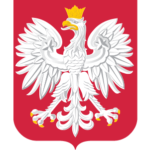Czasopisma 2019
Cent. Asia Caucasus, iss. 2, p. 41-50
The aim of the article is to analyze and characterize the 2018 Velvet Revolution in Armenia and to present its influence on the politics of this country. The first part of the article is devoted to pointing out the most important factors that led to the mass protests in Armenia, such as the weakness and corruption of political elites, monopolization of power structures by one party, inefficiency of foreign policy or the constitutional amendment of 2015. The emphasis was placed on the political determinants of the state political crisis. The course of events during the revolution is subsequently presented, emphasizing the priority role held by the opposition leader Nikol Pashinyan. The paper concludes with the enumeration of the most important transformations in Armenia’s politics, which were initiated after the My Step bloc came to power, and Pashinyan took over the position of Prime Minister.
Barbara Myslik, Liudmila Khalitova, Tianduo Zhang, Sophia Tarasevich, Spiro Kiousis, Tiffany Mohr, Ji Young Kim, Agnieszka Turska-Kawa, Craig Carroll, Guy Golan
International Communication Gazette, 2019, iss. 0, s. 1-24
This study aims to advance the theoretical and practical knowledge of political public relations, and influence that political profile of the media can have on the agendabuilding process. The influences of agenda indexing are also discussed with regard to different media profiles. A quantitative content analysis was conducted to examine the influence of Polish and Russian government messages from presidents and prime ministers regarding the Smolensk plane crash on media coverage in both counties. Newspapers were categorized by political profile representing pro-government, mainstream, or opposition profile. Nearly all of the hypotheses were fully supported for the first, second, and third level of agenda building. Results of this study demonstrate that political public relations’ success and agenda indexing can be affected by a medium’s political profile, particularly in the case of opposition media. Theoretical and practical implications are discussed along with areas of future research.
Romanian Journal of European Affairs, 2019, vol. 19, no. 2, p. 63-86
The article addresses several issues that constitute the main areas of Polish-Romanian relations in the 21st century in the political dimension and in the broad sense of security. Relations between Poland and Romania have been characterized in the context of the membership of both countries in the European Union. Particular emphasis was placed on the period of the Romanian Presidency of the Council of EU, which lasted from January to the end of June 2019. The article indicates the most important common interests of both countries, the ways for their implementation, as well as potential opportunities for the development of bilateral and multilateral cooperation. The article also takes into account the key challenges that Poland and Romania must face in connection with EU membership.
Romanian Journal of European Affairs, 2019, vol. 19, no. 2, p. 5-29
The withdrawal of the United Kingdom from the European Union – if it happens, regardless of the chosen variant – will be associated with various consequences for both sides. Brexit (British exit) will also impact the EU development policy, as London is one of the leading providers of ODA – in 2018 it financed 11.67% of its world’s total, and with Germany and France ensured two thirds of the EU ODA (65.61% in 2018). This paper attempts to answer the main research question: what impact will Brexit have on the EU development policy? The analysis covers the financial plane, and the following elements will be taken into consideration: the impact of the United Kingdom’s withdrawal from the organisation on the general EU budget, the European Development Fund and the sum of funds transferred to ODA by the EU institutions and its Member States, guaranteeing the status of the world’s most generous donor, currently providing more than 50% of total ODA. However, I argue that in the post-2020 perspective the fact that Brexit will happen will matter more the EU’S ODA than the actual form that it will eventually take. The withdrawal of the United Kingdom from the European polity may be associated with a significant reduction of the financial resources at the EU’s disposal and directed towards development assistance, but the European Union will remain the most important ODA donor, contributing around 41% of all global development aid.
Studies in Conflict & Terrorism, Vol. 42, is. 4 (2019), p. 383-406
This article argues that video games have become a valid and increasingly significant means of jihadist digital propaganda. “Gaming jihad” has recently shown interesting alterations, mostly due to actions undertaken by the so called Islamic State and its cyber-partisans, which have discovered new ways of using this flexible and immersive medium. Similar to more conventional forms of its online propaganda, which have been imitated by other Islamist terrorist groups for years, the “Caliphate’s” exploitation of electronic entertainment software may be a forerunner for the increased interest of other violent extremist organizations in this medium.
Liudmila Khalitova, Barbara Myslik, Agnieszka Turska-Kawa, Sofiya Tarasevich, Spiro Kiousis
Public Relations Review – 2019, iss. 0, art. no. 101858, p. 1-17
The study explores Polish and Russian governments’ communication efforts to shape international news coverage of the 2010 airplane crash near Smolensk, Russia, which killed the Polish President Lech Kaczynski and most of his Cabinet. More specifically, the study attempts to assess the role of government communication in shaping the international agenda regarding the crash vis-à-vis the role of Polish and Russian media outlets which also served as information sources for international media. In addition, it examines politico-cultural proximity and economic relatedness as the factors influencing the outcomes of mediated public diplomacy efforts. The findings suggest that, in addition to the governments’ public relations messages, Polish and Russian news outlets played a significant role as their countries’ advocates in determining the international media agenda. Moreover, we found that it was economic relatedness rather than the similarity of culture or political systems that contributed to the success of governments in shaping the international agenda about the crash. Theoretical and practical implications for public relations and public diplomacy are discussed.
The international Journal of Intelligence, Security and Public Affairs, iss. 2, p. 143-161
This paper, which adopts the form of a case study, aims to fill a gap in research on the use of gore content in the Islamic State’s online propaganda. It has two major goals. Firstly, to understand the most important features of the graphical imagery included in the former (2014–2016) Islamic State’s flagship online magazine – “Dabiq”. Secondly, to discuss its functions from the viewpoint of promoting the “Caliphate’s” jihadist agenda. In order to realize research objectives, image analysis of pictures included in all volumes of “Dabiq” was carried out. This paper argues that in contrast to audiovisual forms of the IS’s propaganda, editors of this magazine exploited the macabre only to a certain extent, as a tool of secondary importance, through which they attempted to positively influence and inspire Muslim audiences, legitimize violence against the disbelievers and legitimize its call for jihad. Shocking “infidels” – being the obvious motivation of many execution videos released online by Daesh – while sometimes noticeable, was among the least important goals of “Dabiq’s” editorial staff.
Acta Politologica, cis. 3, s. 1-12
Political elites are the foundation of contemporary representative democracies. This reality highlights the unique scientific and practical significance of studies on political elites. The paper presents a non-standard research approach. Some aspects of using evolutionary game theory models to study the evolution of cooperative behaviours among representatives of political elites are presented. To that end, two models of 2 × 2 games were developed: a single-population and a two-population model. The first one assumes the existence of interactions between representatives of the same population, while the second focuses on interactions among individuals from two different populations. The analyses used two interaction schemes: Stag Hunt and Chicken. Standard replicator dynamics was employed to describe the evolutionary process. The results of the analyses are presented in a graphic form in phase diagrams. The presented approach should be treated as a supplement to traditional research approaches used in social sciences rather than as an alternative.
Communication Today, no. 2, s. 28-41
The mediatization of political communication makes it possible to increase the number of electoral manipulations via media, whose aim is to change the competitive positions of subjects running in the election. Manipulation activities give the opportunity to affect voters’ decisions in a way that would be impossible without the media. Manipulations are performed by politicians, political parties or other subjects acting on their behalf. They can also be initiated by the governments of countries interested in influencing the directions of political changes in other countries. The presented study shows the possible use of media potential to manipulate election results. Such manipulations are possible in the situation of instrumental influence on the functioning of free and pluralistic media that allow political communication, or in the situation of instrumental influence on information, involving the creation and transmission of information in a non-objective way. The text focuses on the following types of electoral manipulations: (1) political influence of the government on the media; (2) political ‘agencification’ of the media; (3) limitations on carrying out election campaigns in the media; (4) the use of big data in political communication.
Nationalities Papers
The Journal of Nationalism and Ethnicity
Vol. 47 Issue 6, 2019, 1048-1066.
Ethnoregionalism in Europe is a phenomenon usually studied in the context of Western Europe. Still, in Central and Eastern Europe, there are some social and political movements that can be categorized as ethnoregionalist. The phenomenon started to play a role even before the Great War and in the interwar period, but was suppressed during the times of socialist regimes. It resurfaced immediately after 1989 during the times of transformation of political systems to fully democratic systems when problems of decentralization, authority, and division of power became openly discussed. In this article, I compare two such movements in the context of their political potential. The Moravian-Silesian movement in the Czech Republic and the Silesian movement in Poland have both similarities and differences, but the article mostly focuses on the evolution of these movements.





